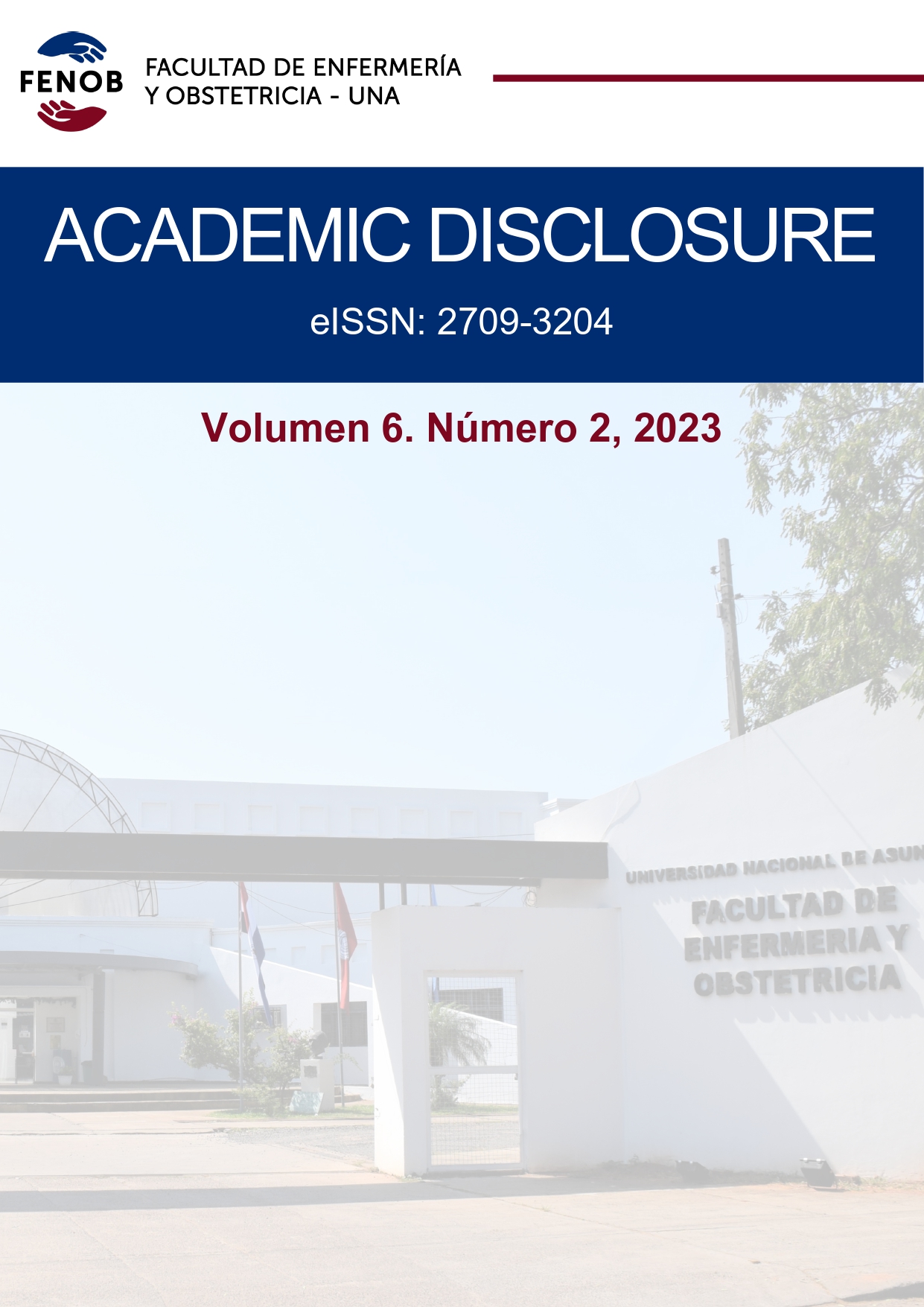Assessment of learning through simulated surgical practices to prevent errors. Paraguay 2023
DOI:
https://doi.org/10.57201/academic.6.2.4197Keywords:
simulation-based learning, simulatorsAbstract
This research analyzes theoretical approaches to simulation-based learning that allow the activities to guide teachers and students to reflect on their praxis. Considering that the main use of simulation learning is the mastery of technical skills because it provides the opportunity for an open and on-demand practice. Thus, students can make mistakes in a safe environment, learn from their mistakes and achieve proficiency through repetition and improvement by comparing the evolution of their skills. This can be evidenced by direct observation or the analysis of the recordings of processes performed in the simulator, which generate discussions and evaluate the performance of simulated clinical situations based on problems. Currently, there are legal ethical restrictions to perform direct practices on people and/or patients. Methodology: Observational, non-experimental, quantitative approach. Sample: 27 students with simulation laboratory experience. Results and Conclusions: the students consider that the simulated practice prevents errors and serious complications; a majority consider that it helped them to avoid serious errors and that the skills acquired helped to prevent all types of complications during the professional practice, therefore they value it as POSITIVE. They value that the errors avoided thanks to the simulated learning were: contamination of the surgical field by dressing correctly, correct assembly of the surgical table, correct gloving, contaminating materials and discarding sharps. As suggestions, they value that the number of supplies and equipment should be increased (updated), more hours of simulation practice, improvement of the teacher/student ratio, greater similarity with the operating room (realism of equipment, biological material), simulated practice program according to competencies per course, unified evaluation system, infrastructure and facilities, teachings regarding the use of supplies, materials, equipment and tools (traumatology), accompaniment once the simulation practice has been completed, simulated practice program for each year/course by specialty and competencies.
Downloads
References
(1) Simulación en Educación Médica | Educación Médica (elsevier.es) Clinical Simulation in Nursing. P. S40. 2016.
(2) Agencia Nacional de Evaluación y Acreditación de la Educación Superior. El Modelo Nacional - Vigentes. Disponible en: http://www.aneaes.gov.py/
(3) Peña Lapeira CJ. La práctica profesional, retos y desafíos para el apoyo organizacional. Bogotá: Corporación Universitaria Minuto de Dios. UNIMINUTO, 2020.
(4) Paige JT, Terry Fairbanks RJ, Gaba DM. Priorities related to improving patient safety in the office-based practice setting. Proc (Bayl Univ Med Cent). 2010;23(4):339-346.
(5) Brown N et al. Los simuladores como herramienta de aprendizaje y Evaluación”. Mimeo: Buenos Aires, 2008. Disponible en: de: http://www.tecnologiaparatodos.com.ar/noticias.php?op=espacio¬a=29985
(6) Del Valle Jiménez D, Ramírez RC, Montoya MSR. Apropiación tecnológica en el movimiento educativo abierto: Un estudio de casos de prácticas educativas abiertas. Revista Iberoamericana de Educación. 2016;70(1):149-166.
(7) Concha Velásquez JR, Solikova A. Análisis de la conducta de las personas en el uso de simuladores. Estudios Gerenciales. 2001;17(79):61-74.
(8) Martín, S. (2013). Simulación de Monte Carlo. Recuperado de http://www.expansion.com/diccionario-economico/simulacion-de-monte-carlo.html
(9) Palés JL, Gomar C. El uso de las simulaciones en educación médica. En: Juanes Méndez, JA, coordinador. Avances tecnológicos digitales en metodologías de innovación docente en el campo de las Ciencias de la Salud en España. Revista Teoría de la Educación: Educación y Cultura en la Sociedad de la Información. Universidad de Salamanca. 2010;11(2):147-69.
(10) Bond W, Khun G, Binstadt E, Quirk M, Wu T, Tews M, Dev P, Ericsson KA. The use of simulation in the development of individual cognitive expertise in emergency medicine. Acad Emer Med. 2008 Nov;15(11):1037-45. doi: 10.1111/j.15532712.2008.00229.x
(11) Torkington J, Smith SG, Rees BI, Darzi A. El papel de la simulación en la formación quirúrgica. Ann R Coll Surg Engl [Internet]. 2000 Mar [consultado el 17 de marzo de 2017];82(2):88-94. Disponible en: http://www.ncbi.nlm.nih.gov/pubmed/10743423
(12) Klamen DL, Sanserino K, Skolnik P. Educación sobre seguridad del paciente: ¿qué fue, qué es y qué será? Enseñar aprender medicina [Internet]. Enero de 2013 [consultado el 16 de octubre de 2023];25(sup1):S44-9. Disponible en: http://www.ncbi.nlm.nih.gov/pubmed/24246106
(13) Corvetto M, Bravo MP, Montaña R, Utili F, Escudero E, Boza C, et al. Simulación en educación médica: una sinopsis. Rev Med Chile [Internet]. Enero de 2013 [consultado el 24 de noviembre de 2017];141(1):70-9. Disponible en: http://www.ncbi.nlm.nih.gov/pubmed/23732417
(14) Gupta A, Snyder A, Kachalia A, Flanders S, Saint S, Chopra V. Reclamaciones por negligencia relacionadas con errores de diagnóstico en el hospital. BMJ Qual Saf [Internet]. 9 de agosto de 2017 [consultado el 24 de noviembre de 2023];bmjqs-2017-006774. Disponible en: http://qualitysafety.bmj.com/lookup/doi/10.1136/bmjqs-2017-006774
(15) de Blacam C, Tierney S, Shelley O. Experiencia de los registradores de cirugía plástica en una rotación que cumple con la Directiva europea sobre tiempo de trabajo. J Plast Surg Cirugía de la mano [Internet]. 4 de julio de 2017 [consultado el 24 de noviembre de 2023];51(4):264-9. Disponible en: http://www.ncbi.nlm.nih.gov/pubmed/27762159
(16) Rehman AJ. Manual de requisitos de fidelidad de simulación de vuelo para la investigación de factores humanos [Internet]. Centro Técnico de la Administración Federal de Aviación; 1995 [consultado el 17 de marzo del 2017]. Disponible en: https://books.google.co.uk/books/about/A_Handbook_of_Flight_Simulation_Fidelity.html?id=tyWwSgAACAAJ&redir_esc=y






 Todo el contenido de esta revista, está bajo
Todo el contenido de esta revista, está bajo 